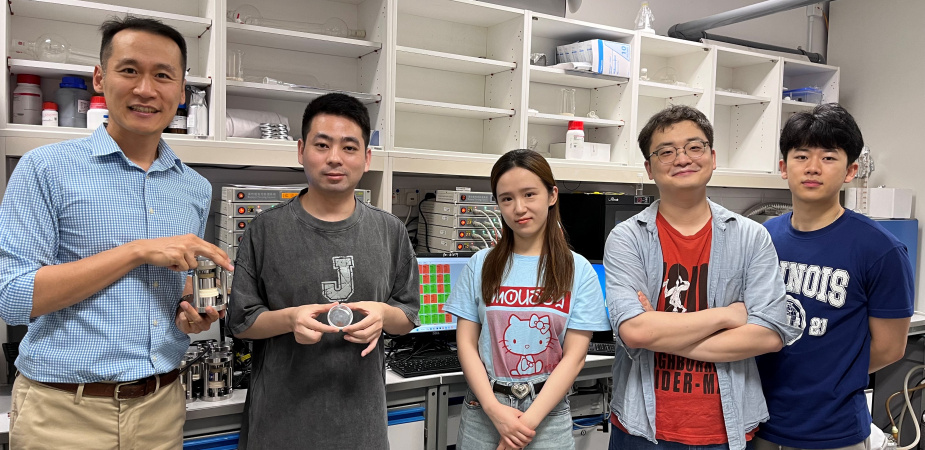Yoonseob Kim教授的高性能全固態鋰金屬電池研究於能源領域期刊《Advanced Energy Materials》上發表
香港科技大學化學及生物工程學系助理教授Yoonseob Kim領導的研究團隊,最近於能源領域的頂級期刊《Advanced Energy Materials》上發表了一篇論文,題目為「基於離子型共價有機框架複合物的高性能全固態鋰金屬電池」。
論文的作者包括Kim教授、其博士生黃俊(第一作者)、博士生李晨、博士生羅航、博士後研究員Ki-Taek Bang博士、可持續能源工程學工學士2023年畢業生Albert Liem,以及來自上海交通大學、浙江大學和韓國漢陽大學的合作研究人員。
論文摘要(只備英文版):
Ionic covalent organic frameworks (iCOFs) are crystalline materials with stable porous structures. They hold great potential for ion transport, particularly as solid-state electrolytes (SSEs) for all-solid-state lithium metal batteries (ASSLMBs). However, achieving an ionic conductivity of over 10−3 S cm−1 at room temperature using pure-iCOF-based SSEs, even adding additives such as lithium salts, is challenging as the voids work as strong resistances. Thus, highly conductive iCOFs typically require quasi-solid-state configurations with organic solvents or plasticizers. In this study, composites comprising iCOFs and poly(ionic liquid) (PIL) are prepared to make all-solid-state iCOFs electrolytes with an exceptional ionic conductivity up to 1.50 × 10−3 S cm−1 and a high Li+ transference number of > 0.80 at room temperature. Combined experimental and computational studies show that the co-coordination and competitive coordination mechanism established between the PIL, lithium bis(trifluoromethanesulfonyl)imide (LiTFSI), and iCOFs enabled rapid Li+ transport while restricting TFSI− movement. ASSLMB cells, made of composite SSEs and LiFePO4 composite cathode, demonstrate an initial discharge capacity of 141.5 mAh g−1 at 1C and r.t., with an impressive capacity retention of 87% up to 800 cycles. Overall, this work presents a breakthrough approach for developing advanced SSEs for next-generation high-energy-density ASSLMBs.

